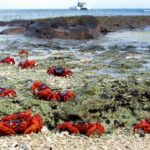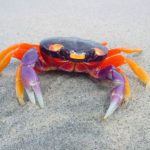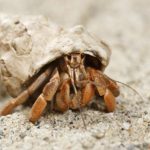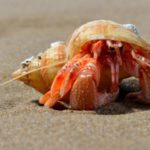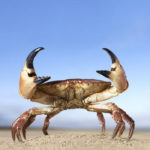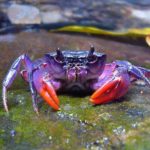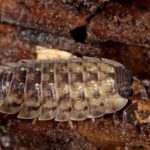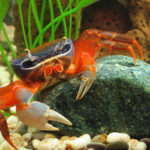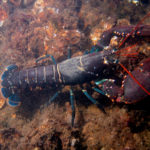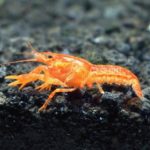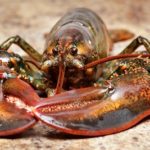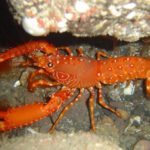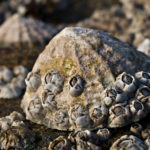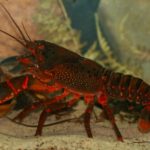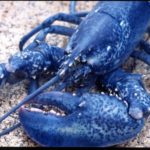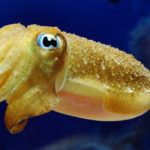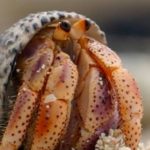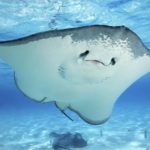Crabs
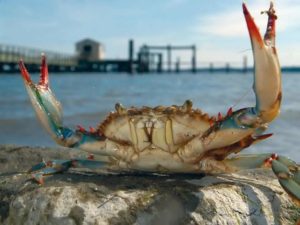 Crabs are a vast group of aquatic and near-water animals belonging to the detachment of Decapod Crustaceans. From crayfish, shrimp, lobster and lobster crayfish, crabs differ markedly shortened abdomen tucked under a wide cephalothorax. This gives them a specific, well-recognizable form. At the same time, crabs have reached an unprecedented variety: 6793 species of these animals are united in 93 families, which is half of the total number of the detachment.
Crabs are a vast group of aquatic and near-water animals belonging to the detachment of Decapod Crustaceans. From crayfish, shrimp, lobster and lobster crayfish, crabs differ markedly shortened abdomen tucked under a wide cephalothorax. This gives them a specific, well-recognizable form. At the same time, crabs have reached an unprecedented variety: 6793 species of these animals are united in 93 families, which is half of the total number of the detachment.
Along with a special form of body for crabs is characterized by the presence of 10 pairs of limbs. They are divided into thoracic and abdominal. The first 3 pairs of thoracic limbs are very short, they are called jaws because they do not participate in movement, but serve only to offer food to the mouth. The remaining pairs of thoracic legs serve to move, grab and cut food, and can also perform other auxiliary functions. A pair of the biggest and massive legs are claws.
With their help, crabs can not only hunt, but also defend themselves, participate in marital battles. The narrow specialization of these organs is reflected in their appearance: often the right and left claws have a different size and shape, giving the body of the crab an appreciable asymmetry. As for the abdominal legs, they are small and are used for fertilization (in males) or for bearing eggs (in females). With the chest legs of crabs are associated such vital organs as the gills. Often, their petals are located directly on the segments of the legs or near the place of their attachment to the body.
Crabs are one of the most perfect crustaceans, therefore they have developed sense organs. A big role in their life is played by sight. The eyes of these animals are complex, faceted. They consist of thousands of eyes, each of which sees only a tiny part of the space right in front of you. The final assembly of the image takes place already in the brain of the animal. Numerous observations have shown that with the help of sight, crabs identify a potential enemy, find a partner in the breeding season, orientate in search of food. But if the animal is blinded, it will lose unless the ability to see the danger, and the food and partner will find with almost the same efficiency.
This will help him antennas (“antennae”), capable of catching smells. If the crab is cut off and the antenna, then … it will again find food. However, in this case, he will have to spend a lot of time and energy, because to move toward extraction, he will literally touch, tapping claws on the ground. Some types of crabs have organs of equilibrium – statoliths. By the way, a huge role in their physiology is played by … the stems of the eyes. These are the real endocrine glands capable of releasing hormones and regulating such functions of the organism as the frequency of the lines, the onset of maturity and even the color change!
Skin as such has no crabs, it is replaced by a layer of hard and impermeable chitin, which forms a kind of shell. Chitin is not able to stretch, which makes it impossible for ordinary linear growth. Crabs solve this problem with the help of regular moults. When the old shell bursts, a soft and defenseless animal is selected from it. On the hardening of the new cover leaves from a few weeks to six months, during this period the crab hides in a secluded place and intensively grows. Chitin can be impregnated with all kinds of pigments, so the color of crabs can be almost any.
Within a wide range, the size of these animals also varies. The diameter of the shell of the world’s smallest crab-pea does not exceed 1 cm, while the footprint of the largest Japanese spider crab reaches 4 m with a weight of 20 kg.
Crabs inhabit all the seas and oceans of the planet, but they reach the greatest variety in the tropics. The habitat of these crustaceans has a very wide range: crabs can be found in the shallows of the seas and oceans, among the thickets of corals on reefs, at depths of up to 5000 m, in caves, in the tidal zone, mangroves and even in the depths of islands away from the shore. The vast majority of them live in salt water, about 850 species live in fresh water. Crabs, which spend a long time on land, store water under the shell or develop organs like lungs. Underdeveloped gills in them almost do not work and with constant immersion in water such individuals die. Species that live on the bottom are often active in the dark, land crabs are most active during the day.
